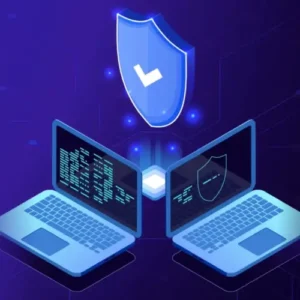VoIP phone systems vary from traditional installations in that they do not require copper wire that spans the entire business. Virtual connections are established using an internet connection. Yet, because everything house on the cloud, security is frequently a major worry. Hacking into a phone system isn’t as difficult as you would believe. How VoIP Hacking Works and How to Secure Your VoIP Phone?
Because of the Internet of Things revolution, everything is done online. The phone system makes it difficult to authenticate calls and can lead to new data breaches. As a result, social engineering is frequent.
Someone who uses VoIP to carry out an attack can gain access to sensitive client data.
What exactly is VoIP hacking?

VoIP hacking is a form of assault in which a person infiltrates your company’s phone system. They can listen in on phone calls, rack up large costs, and steal vital information about your company and its customers.
Hacks often occur when one of your workers inadvertently provides information to a fraudster. 97% of all malware assaults are the result of social engineering frauds.
Hackers impersonate personnel working in customer service and the Network Operations Center (NOC). Employees may unwittingly provide illegal access to the hacker, allowing them to take control of your VoIP phone system.
Access to your company’s phone system might be used to launch additional assaults. A VoIP hacker, for example, may use the information to charge your credit card, impersonate your company, and access sensitive client information.
It’s critical to remain up to date on the various ways business phone systems can attack and to go through the actions you and your provider can take to safeguard conversations.
There are five forms of VoIP hacking
Because of their configuration, VoIP phone systems pose distinct network security concerns than conventional traditional phone systems. Here are the top five forms of VoIP hacking to be wary of.
Unlicensed usage
This form of attack occurs when hackers make phone calls over your company’s phone infrastructure.
Robocalling and auto-dialing software can be used by hackers on your phone system. Customers who call your number will hear a taped voice urging them to do anything, such as input their credit card details to “confirm their account.” Yet, it is not your responsibility to make the decision. The hacker now has complete access to all of that data.
Hackers can even use your genuine company phone service to commit fraud. When they use your VoIP system to make phone calls, your caller ID will appear. They can imitate your firm in order to steal your consumers’ personal information.
Worst of all? Illegal usage of your VoIP system might go unnoticed, especially if you do it yourself. Check your call logs and history on a regular basis, and set alerts if you go over a specific limit. As a result, you’ll be warned of unlawful use sooner rather than later.
Toll evasion
When hackers make international calls to other devices, they commit toll fraud. Toll rates for these long-distance phone lines can be costly, and they will be charged to your account. According to Trend Micro, toll fraud costs the country $27 billion.
Attackers might employ phishing schemes to acquire unauthorized access to your VoIP system by targeting users and administrators.
For example, hackers may leave a voicemail asking your finance staff to verify their financial details. Because your employee is unaware of the distinction, they return the phone call and provide the verification codes—such as your phone system password or IP address.
The hacker now has access to information that may be used to compromise your VoIP phone system and make costly long-distance calls.
Caller ID forgery
Do you believe the number displayed on your phone’s caller ID when it rings?
Caller ID isn’t always a trustworthy technique to identify who is calling. Hacker can employ phony caller IDs in conjunction with another assault, such as social engineering.
Workers frequently place a premium on a caller’s phone number or identity. Hence, if they get a call from someone purporting to be from their VoIP provider, they can be misled into disclosing crucial information.
Providing such information, frequently without understanding the person on the other end is not who you anticipated, might enable hackers access to your company’s VoIP system.
Eavesdropping
Do you accept payments over the phone or do you require clients to call you in order to provide personal information? If this is the case, you should take precautions to avoid eavesdropping. When hackers listen in on your real-time business phone calls or recordings, such as voicemails, this is what happens.
Eavesdropping is only feasible if the connection is not encrypted or if the local network is compromised. Insecure Wi-Fi networks, such as those without Transport Layer Security (TLS) and Real-time Transport Protocol (SRTP), encourage attackers to monitor the network.
Eavesdropping allows hackers to get information about your company and its consumers. They have access to every encounter your company has had.
Social manipulation
According to research, 62% of firms were subjected to a social engineering attack in 2018. Since it preys on people rather than technology, it is a prevalent sort of VoIP Hacking.
Hackers strive to establish relationships with their victims so that they believe the call is real, but it is not. The call comes from a hacker impersonating someone else in order to deceive you into disclosing critical information.
Attackers employ social engineering to take advantage of people’s genuine desire to be kind. It’s difficult to say no when someone begs for something, especially if you have no reason to question who they claim to be.
There is also a dearth of understanding about social engineering initiatives. Workers are seldom taught on the dangers of fraudulent phone calls made by attackers impersonating a caller ID.
Attackers prey on individuals in order to obtain information about a target that they may later utilize. This includes making bogus account requests, such as validating your account, and harassing or threatening victims based on the information they’ve gathered.
These emotionally charged circumstances put pressure on personnel to act soon away, even if it means going against appropriate protocol.










